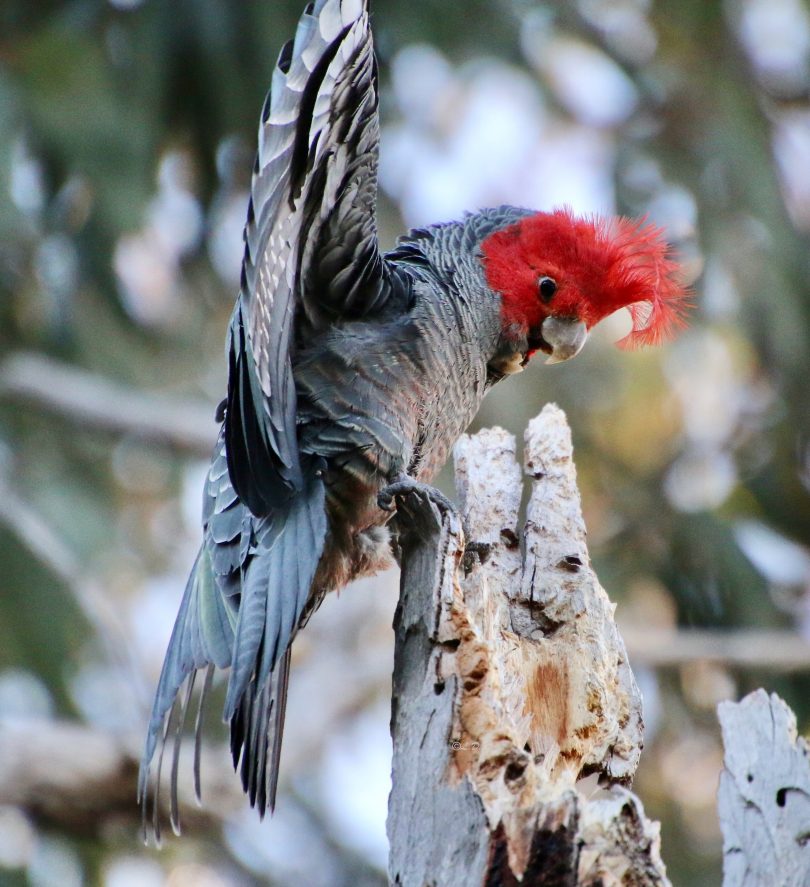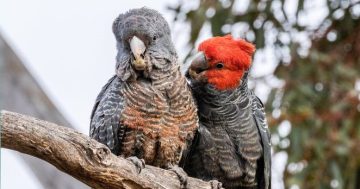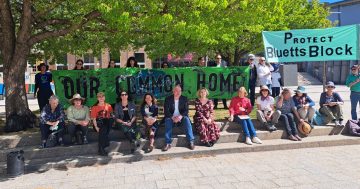
Eurobodalla Shire Council is joining with biologists to try and save the iconic gang gang cockatoo. Photo: Eurobodalla Council.
The sight of gang gang cockatoos is a joy for wildlife lovers and bushwalkers – hearing their creaking call overhead makes you look upwards to try and snag a glimpse of the flame-red feathers of the male birds.
But sadly, sights like this are becoming much less common. It’s estimated that in the last 21 years, the population of gang gang cockatoos has declined by 69 per cent.
“We didn’t realise exactly how much trouble gang gangs are in – they’re likely to be nationally listed as endangered when reassessed next year,” biologist Dr Susan Rhind said.
According to the Conservation Council ACT Region, gang gangs suffered enormously from the 2019-2020 bushfires, which are estimated to have reduced their population by 10 per cent.
The NSW Office of Environment and Heritage says other threats include climate change, the psittacine circovirus disease, and a loss of breeding and foraging habitat due to forestry management practices.
However, all hope is not lost and citizen scientists are being called on to help a project that aims to reverse the decline.
Eurobodalla Shire Council has joined with Dr Rhind to secure a grant to build and site artificial breeding hollows for gang gangs in the shire.
Council’s natural resources supervisor Courtney Fink Downes said the three-stage project would start by finding natural hollows where gang gangs are showing interest.

A pair of gang gang cockatoos seen at a tree hollow. Photo: Eurobodalla Council.
Scientifically designed nest tubes will be hung in the vicinity of those natural hollows, then five years of volunteer and mechanical nest monitoring will begin.
“We’re looking for help at each stage of the project. Really, this has to be one of the most exciting citizen science projects out there,” Ms Fink Downes said.
Dr Rhind developed gang gang-specific nesting tubes after examining models successful in helping other endangered cockatoos, including glossy black cockatoos in the east.
The dimensions of the PVC nest tubes were adjusted using measurements of natural gang gang hollows made by ACT researchers, who will also deploy tubes as part of the collaborative research effort.
“The design is very precise to avoid potential welfare concerns. While your standard wooden nest box won’t endanger birds, they’re of no use for gang gangs – they’d be chewed apart in no time,” Dr Rhind said.
Researchers in the ACT have noticed several gang gang pairs will nest in close vicinity and appear to defend each other’s hollows.
Dr Rhind plans to put three nest tubes near a natural gang gang hollow at 10 locations in the Eurobodalla this summer.
“The nesting tubes won’t be used by the birds this breeding season. But putting them up by January and February gives them plenty of time to examine the tubes,” she said.
“Gang gangs don’t necessarily use the same hollows each year, but they should remember the nest tubes for future years.”
The project wants to hear from anyone in the Eurobodalla who has recently seen gang gangs checking out tree hollows as now is the time when the birds look for potential nest sites.
Either upload this information to the iNaturalist app or website, or email the details to ganggangfarsouthcoast@gmail.com. You must include the time and location of the siting, a photograph of the tree and a photo of the tree hollow if possible.
Gang gangs can be found from southern Victoria to the ACT and through to central-eastern NSW.
In spring and summer, they are often found in tall mountain forests and woodlands, but in autumn and winter, they often move to lower altitudes in drier and more open eucalypt forests, or to dry forests in coastal areas.
Original Article published by Albert McKnight on About Regional.














